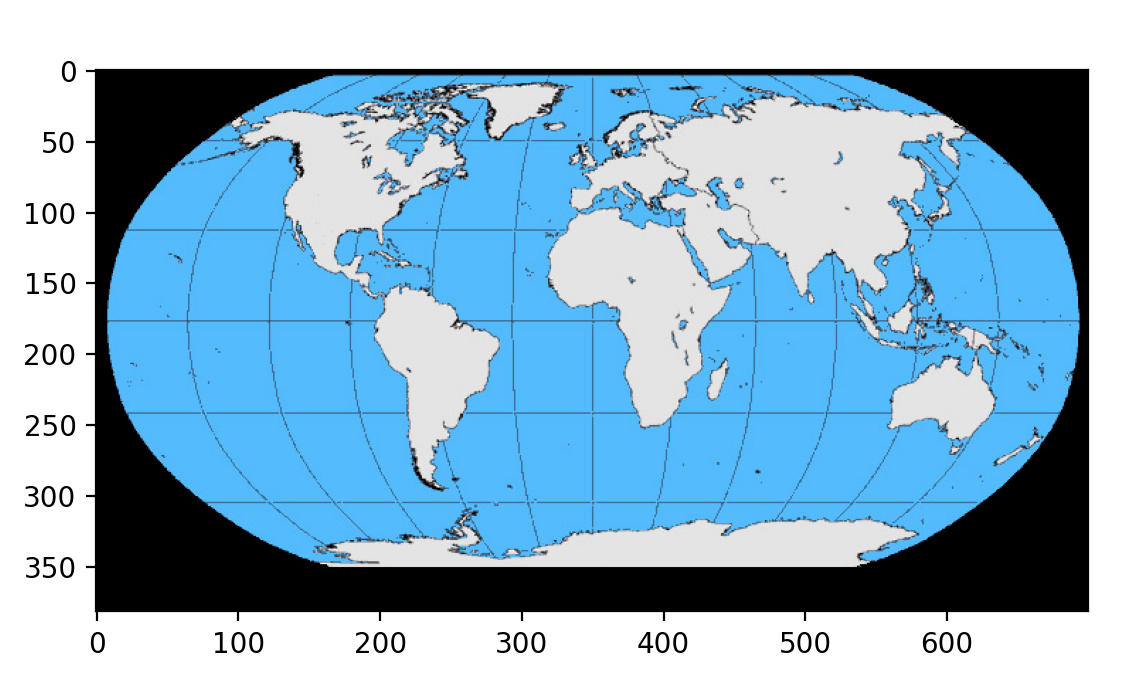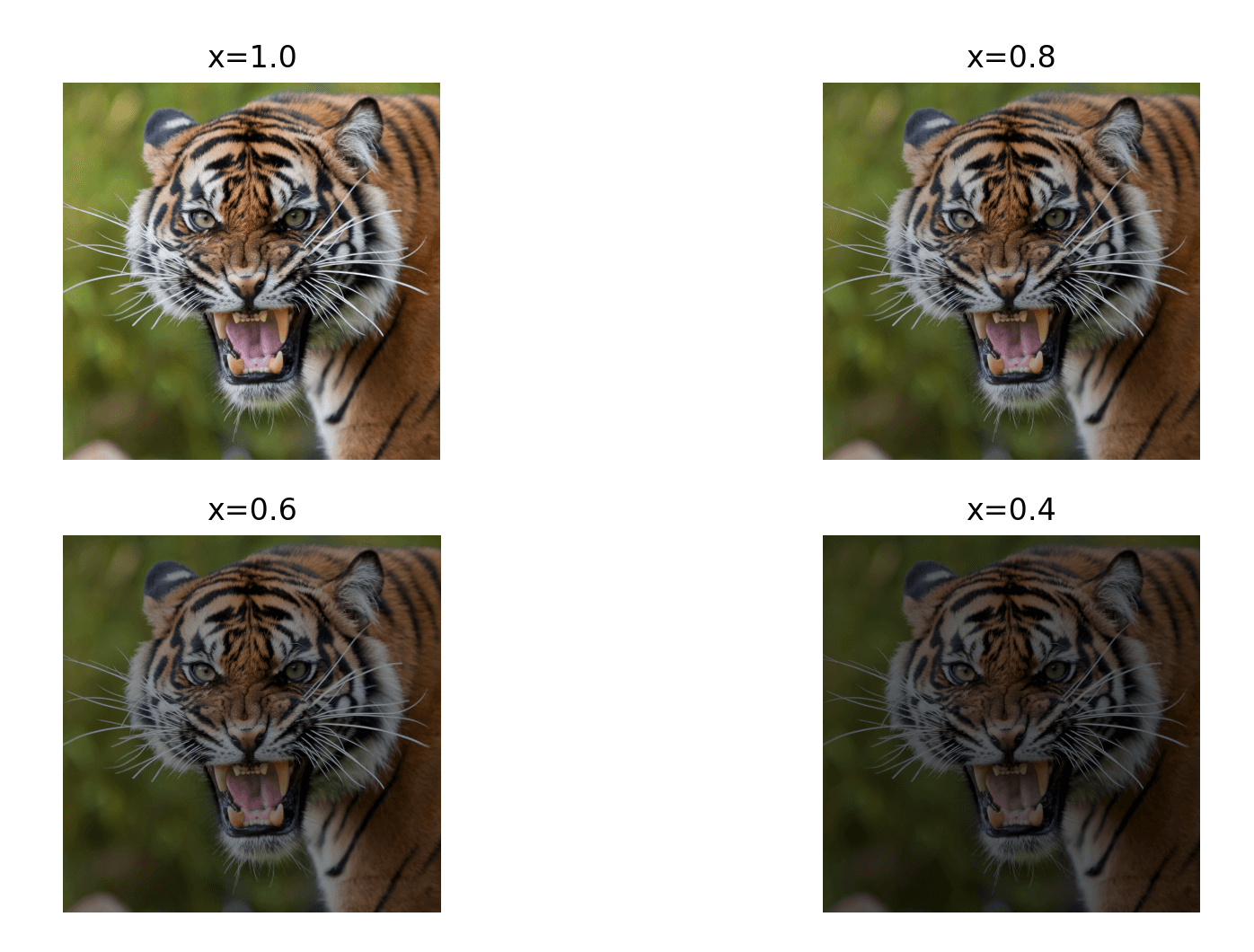Matplotlib imread() 方法
imread() 方法是 Matplotlib 库中的一个函数,用于从图像文件中读取图像数据。
imread() 方法返回一个 numpy.ndarray 对象,其形状是 (nrows, ncols, nchannels) ,表示读取的图像的行数、列数和通道数:
- 如果图像是灰度图像,则 nchannels 为 1。
- 如果是彩色图像,则 nchannels 为 3 或 4,分别表示红、绿、蓝三个颜色通道和一个 alpha 通道。
imread() 方法的语法如下:
matplotlib.pyplot.imread(fname, format=None)
参数说明:
-
fname:指定了要读取的图像文件的文件名或文件路径,可以是相对路径或绝对路径。 -
format:参数指定了图像文件的格式,如果不指定,则默认根据文件后缀名来自动识别格式。
以下实例演示了如何使用 imread 函数从一张图像文件中读取图像数据,并将其显示出来:
实例
# 读取图像文件,下载地址:https://static.jyshare.com/images/demo/map.jpeg
img = plt. imread ( 'map.jpeg' )
# 显示图像
plt. imshow ( img )
plt. show ( )
以上实例中我们首先使用 imread() 方法从名为 map.jpeg 的图像文件中读取了图像数据,并将其存储在 img 变量中。
然后我们使用imshow() 方法显示了这张图像。
注意:我们在显示图像时没有指定颜色映射,这是因为 imread() 方法已经将图像数据按照正确的颜色映射转换成了 RGB 格式,因此我们可以直接使用默认的颜色映射来显示图像。
显示结果如下:

我们可以通过更改 numpy 数组来修改图像。
例如,如果我们将数组乘以一个数 0≤≤1 ,我们将图像变暗:
实例
# 读取图像文件,下载地址:https://static.jyshare.com/images/mix/tiger.jpeg
img_array = plt. imread ( 'tiger.jpeg' )
tiger = img_array/ 255
#print(tiger)
# 显示图像
plt. figure ( figsize = ( 10 , 6 ) )
for i in range ( 1 , 5 ) :
plt. subplot ( 2 , 2 , i )
x = 1 - 0.2 * ( i- 1 )
plt. axis ( 'off' ) #hide coordinate axes
plt. title ( 'x={:.1f}'. format ( x ) )
plt. imshow ( tiger*x )
plt. show ( )
显示结果如下:

以下实例用于裁剪图像:
实例
# 读取图像文件,下载地址:https://static.jyshare.com/images/mix/tiger.jpeg
img_array = plt. imread ( 'tiger.jpeg' )
tiger = img_array/ 255
#print(tiger)
# 显示图像
plt. figure ( figsize = ( 6 , 6 ) )
plt. imshow ( tiger [ : 300 , 100 : 400 , : ] )
plt. axis ( 'off' )
plt. show ( )
显示结果如下:

如果我们将 RGB 颜色的绿色和蓝色坐标的数组元素设置为 0,我们将得到红色的图像:
实例
# 读取图像文件,下载地址:https://static.jyshare.com/images/mix/tiger.jpeg
img_array = plt. imread ( 'tiger.jpeg' )
tiger = img_array/ 255
#print(tiger)
# 显示图像
red_tiger = tiger. copy ( )
red_tiger [ : , : , [ 1 , 2 ] ] =
plt. figure ( figsize = ( 10 , 10 ) )
plt. imshow ( red_tiger )
plt. axis ( 'off' )
plt. show ( )
显示结果如下:

